► New Cayenne Coupe E-Hybrids driven
► Turbo with GT Package tops range, tested in the UK
► Incredible power and tech, and good e-range
The Porsche Cayenne Coupe Turbo E-Hybrid with GT Package is not something you should attempt to say five times very quickly, after several libations or the loss of your false teeth. But it is the most potent version of the most powerful Porsche Cayenne drivetrain ever produced. And one of the best hybrids of any kind that you can currently buy.
We’ve driven it – hard – around the mountain roads of Montserrat as well as in the UK. And if you have lost your false teeth after recently taking possession of a Turbo E-GTP (better?) then we reckon there’s a fair chance you might have swallowed them.
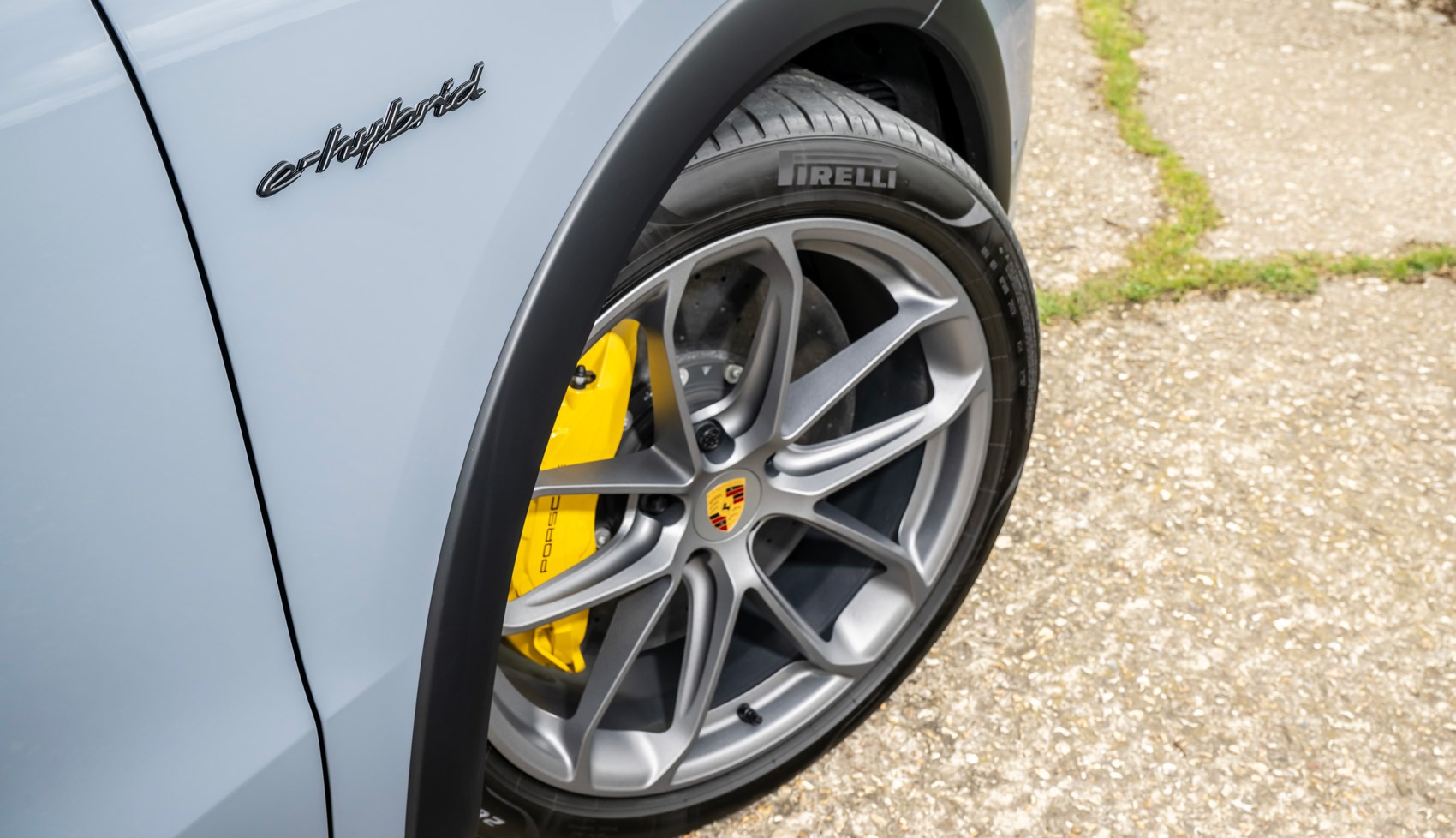
For 729bhp boosted in part by a 330lb ft electric motor is more than enough to give you the serious giddies at the wheel of a 2.5-tonne swept-roof SUV. But then, with a starting price of £154,000 before you get into the really juicy options, it’s not just the performance that might have you sucking the dentures in.
For context, we’ve also driven the 512bhp Cayenne S E-Hybrid Coupe, as well as the regular Turbo E-Hybrid – which has the same 729bhp but does without the titanium and carbonfibre. All plug-in hybrids, each the recipient of a 2023 facelift and associated engineering upgrades, including extra batteries and a more powerful e-motor.
Need to scare the bejeesus out of four passengers and a small – this is the Coupe, after all – dog? Strap yourself in.
At a glance
Pros: staggering performance, good e-range, built extremely well, available with purple leather
Cons: E-Hybrid weight blunts the dynamics, 729bhp GT Package is unnecessary
What’s new?
The Cayenne E-Hybrid is, as you’d expect, Porsche’s plug-in SUV. But there were cries (mostly from motoring journalists, given how few will have been sold) when Porsche culled the rather ballistic Turbo GT. The Turbo E-Hybrid with GT Package is its replacement – though, even Porsche’s execs admit it’s not quite the same.
Even with all the electric-motor enhanced torque in the world – and the Turbo E has 698lb ft of it in total – you’ll struggle to compensate for a 275kg weight penalty. No matter that most of the extra is concentrated in the batteries over the back axle.
Still, there are other pluses.
Facelifted Cayennes of this calibre come with new two-chamber, two-valve air suspension as standard; offering variable compression and rebound, this provides better comfort (Spanish roads so far, but seems on point) and keeps the wheels more in contact with the ground for greater traction. And all the updated E-Hybrids are better at being hybrids.
For instance, the battery pack is now a substantial 25.9kWh (up from 17.9kWh), delivering up to 46 miles of electric-only range and recharging more quickly, too. The e-motor now delivers 174bhp on its own (up from 128bhp) and can recuperate brake energy all the way down to 1mph. You also need lower battery reserves for maximum performance now.
All of which makes the latest Cayenne E-Hybrids more efficient and faster, more of the time.
Other post-facelift upgrades include optional HD Matrix LED headlights with 32,000 individual light pixels, optional 10.9-inch screen for the front passenger (if they can watch a film while you’re pedalling your hardest, they’re probably a keeper), and a faintly wild array of new colour and trim options. Examples we drove on the launch included Bramble (purple) leather, satin Neodyme (gold) highlights and a variety of carbonfibre trims.
All models get a curved digital screen for the instrument cluster in place of conventional dials, smaller gear-selector – now mounted near the steering wheel – and a giant button on the centre console that operates various functions depending on which of the illuminated icons your finger is over at the time. This seems a bit unnecessarily awkward to use but, hey, modern design.
What are the specs?
There are now three Cayenne Coupe E-Hybrid variants, plus the GT Package (which is only available on the Turbo).
The regular E-Hybrid combines a 300bhp 3.0-litre turbo V6 with the electric motor, delivering 463bhp and 479lb ft in total. It will do 0-62mph in 4.9sec and a top speed of 158mph – which is 4mph more than the SUV version, proving that roofline is good for something.
The S E-Hybrid gets a 348bhp version of the same V6, for a total system output of 512bhp with 553lb ft. This is enough for 0-62mph in 4.4sec and a top speed of 163mph.
The Turbo E-Hybrid puts both of those in their place with a 591bhp 4.0-litre V8 for that utmost of 729bhp and 700lb ft. The regular version does 0-62mph in 3.7sec and 183mph.
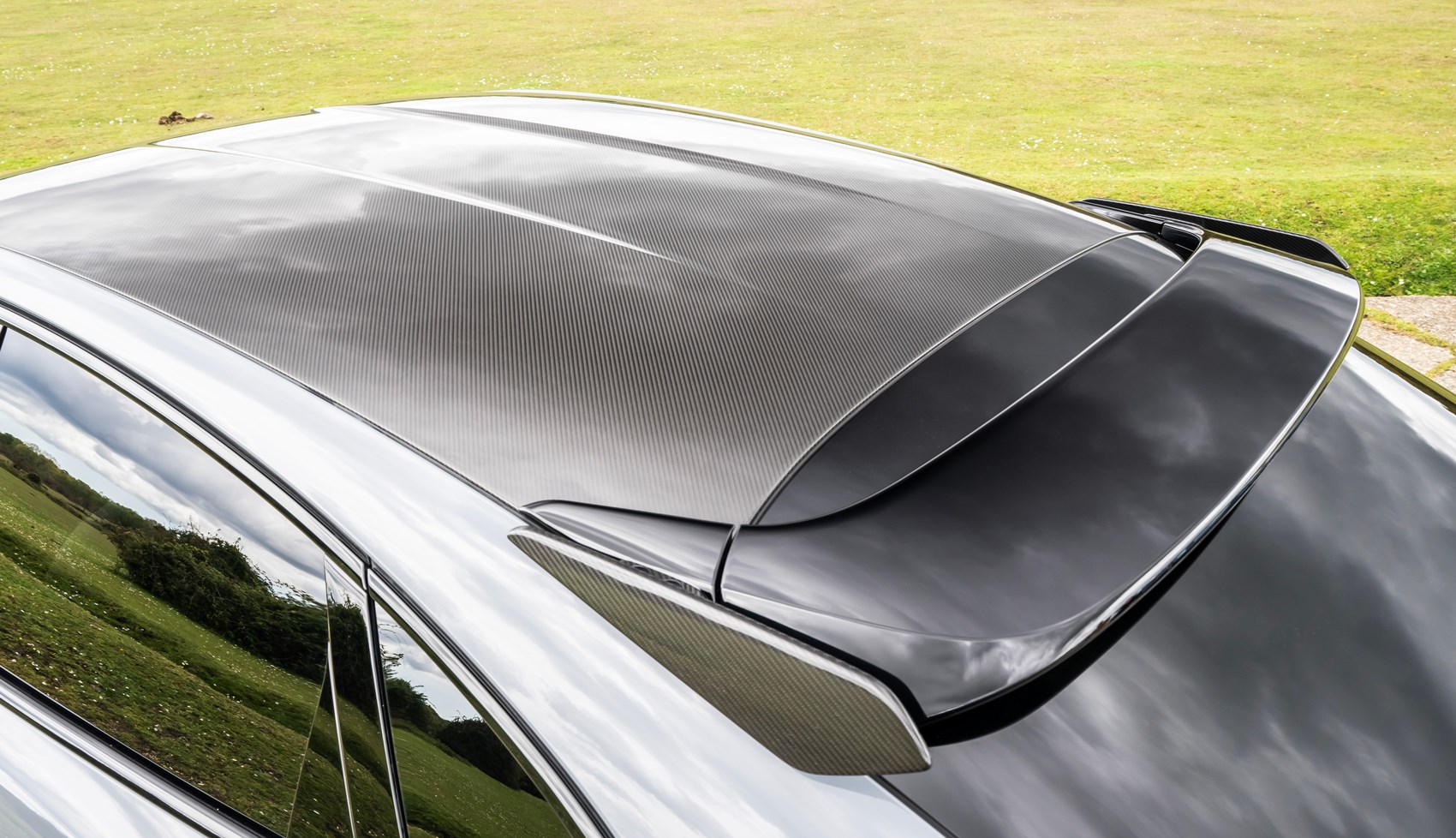
The GT Package is ‘over 100kg’ lighter thanks to a carbonfibre roof in place of the standard glass panel, titanium exhaust and reduced sound-deadening, and makes 0-62mph in 3.6secs before hitting 190mph.
All benefit from a new 11kW onboard charger, which means you can recharge the battery pack in 2.5 hours via the mains. Electric driving range varies slightly, but you should get over 40 miles before the cells completely give out.
In reality, thanks to up to an increased 88kW of recuperation power that functions to almost a standstill, and some clever hybrid optimisation, you may find the overall EV distance on a mixed journey is actually higher than that.
Up to 84mph is possible without the combustion engine, and in the more aggressive Sport and Sport Plus driving modes we noticed the engine actively charging the battery during low-load situations. This is presumably to ensure there is maximum power available whenever you require it.
What about the interior?
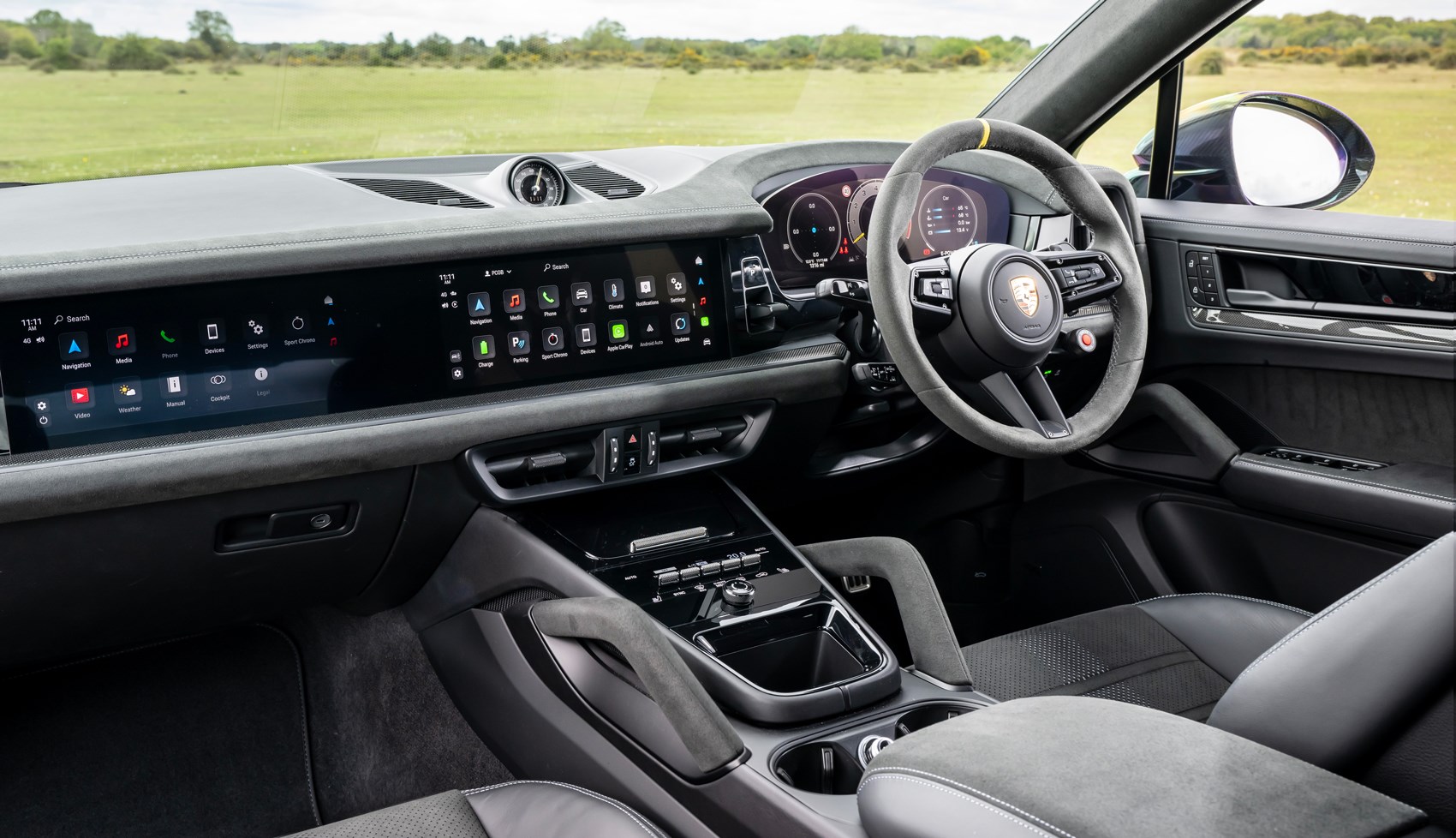
Modern-lux lushness without reaching the gauche heights of the BMW iX. And that includes taking the satin gold trimmings and purple leather into account (which we secretly rather like).
The screens are crisp, the information they contain clearly presented – though it takes a little while to get to grips with you customised the instrument cluster – and the seats are largely fantastic. The emphasis is on large, however, since we found ourselves sliding about within them when cornering hard, forcing the occasional improvised brace position.
There’s loads of room in the back as well. Plus a reasonable 434-litre boot; the BMW X6 is up to 580 litres but hasn’t yet had to accommodate any plug-in hybrid gubbins. Safety kit is right up there with the best, and the Cayenne’s most recent Euro NCAP rating was five stars, albeit for the SUV back in 2017.
How does it drive?

Accessing maximum power couldn’t be easier. Which seems an extremely daft statement about a coupe on stilts that weighs upwards of 2,495kg while possessing 729bhp, but there are two fine reasons for this.
Firstly, there’s the Sport Response button, which can summon the whole shebang for 20 seconds of overtaking fun, primed to go in the lowest-possible gear – regardless of whether you were previously bimbling in EV mode. Secondly, there’s that Porsche chassis magic, which has decades of experience wringing outrageous enjoyment from unusual drivetrain configurations.
It is utterly bonkers just how quickly you can drive one of these on the public highway. Even – or perhaps especially – an exceedingly twisty one. We would defy anyone not to squeal like a stuck pig on helium the first time they launch all 700lb ft out of a hairpin uphill, the muscularity of the thing seems to build somewhere deep in the pit of your stomach before hauling you at the horizon with the inevitability of a trebuchet.
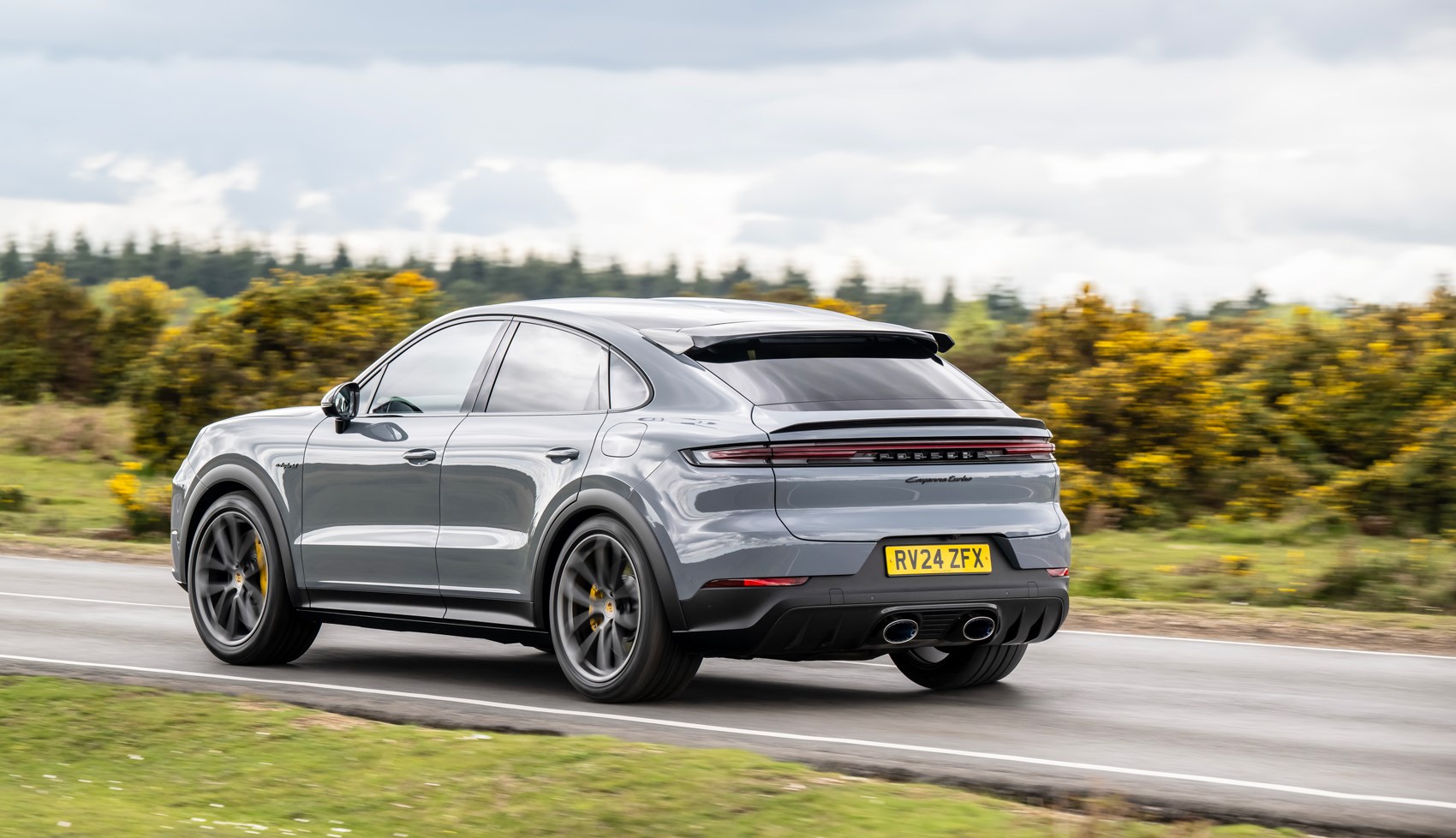
The soundtrack is NASCAR after finishing school, not that loud on the inside but surely enough to put the local Greta on notice. Somehow better yet is the way the brakes – optional carbon-ceramics, please – allow you to slough off great chunks of excess right into the next corner entry, where the recalibrated suspension, wider front track and revised geometry of the GT Package then allows you to scythe round with nary a concern about tightening apexes or oncoming goods vehicles.
There’s probably a bit of an aha moment about the real bonus of the GT Package in there for some of you – for this indeed rides 10mm lower on retuned air with new steering knuckles and stiffer front anti-roll bars, as well as giving it the fancy-fancy with the panoramic roof delete (which improves the CoG, natch) and central tailpipes.
And yes, the upgraded front end surely does make a difference to the Turbo E-Hybrid’s ability to be incisive to the point of immense over-confidence. But to get the full effect you have to go even further into the options to add rear-axle steering and active anti-roll; non GT-models will also need torque vectoring and the Sport Chrono Pack to stand half a chance of keeping up.
What’s most remarkable is how Porsche manages to make all of this technology feel utterly at one when you’re pushing on. Not once did we feel caught out by the active back axle, for example.
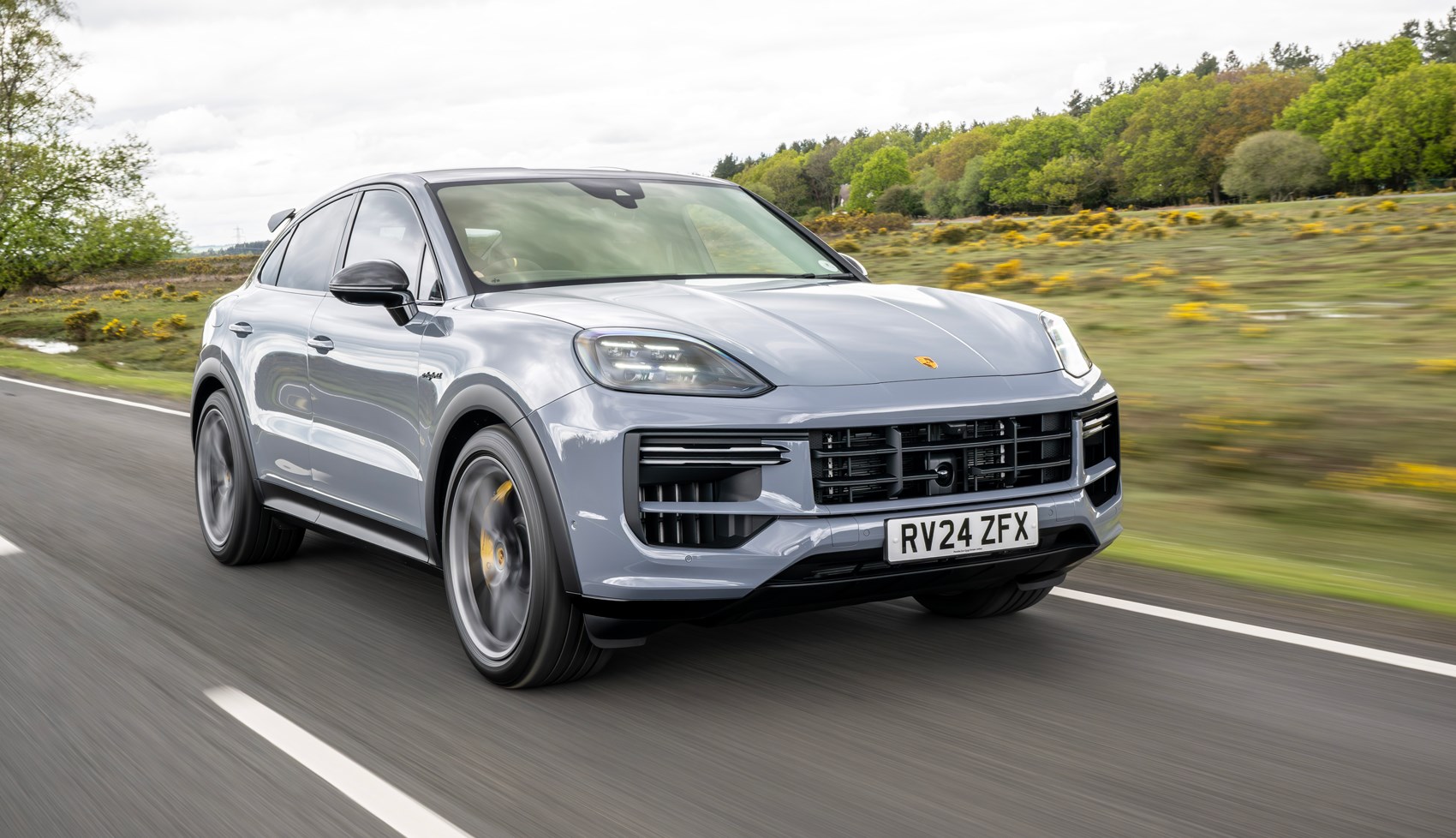
But there’s an overbearing feeling to all of this: the Turbo with the GT Package is a bit much. Yes, yes – Captain Obvious points out that 2.5-tonne, 729bhp SUV is a little OTT – but when the lower-end Cayennes are so damn good, this just feels like when someone adds every trimming possible to an already very tasty burger. There’ll be a point that those toppings will start to spoil it. The E-Hybrid offers so much that this wild Turbo GT Package has, but for way less. And, if you want a sports car, why are you looking at this?
Before you buy (trims and rivals)
Porsche typically matches trims to engines, so there is only a single choice for each E-Hybrid variant (if you discount the specific GT Package), which can be amended via the dangerous territory that is the options list. Wherein almost all your heart desires is achievable – for a price.
We all know Porsches are expensive. The element of this to really enjoy here is the walk up from the S E-Hybrid to the Turbo E-Hybrid, which at the time of writing for the Coupe means jumping from £90,100 to £132,600. The GT Package takes your Turbo up to £154,000.
As for rivals, Porsche successfully flattens most comers as a complete proposition – and certainly no-one else builds an SUV coupe with such a remarkable plug-in hybrid set-up. However, a Bentley Bentayga (a Cayenne close-relation) out-does the Porsche for ultimate luxury. While even higher-end alternatives such as the Aston Martin DBX 707 and Ferrari Purosangue will pip the porker (literally) for ultimate thrills.
Verdict: Porsche Cayenne E-Hybrid
Porsche’s electrified Cayenne is a fantastic thing. A sweet handler, a practical and premium family bus (even in Coupe form here), competitive on price compared to its closest rivals and manages a good amount of e-range to truly be a useful plug-in hybrid. The Turbo adds a fierce amount of performance that’s very hard to ignore, and the GT Package trims all of that with some high-performance goodies.
But that GT Package is also deeply unnecessary. Fiercely potent it might be, but it’s a heavy and blunt instrument that doesn’t feel quite as poised as something like a DBX or as special as a Urus. I may be in a minority, but I just don’t get it – particularly when (slightly) more accessible Cayenne variants are so damn good.